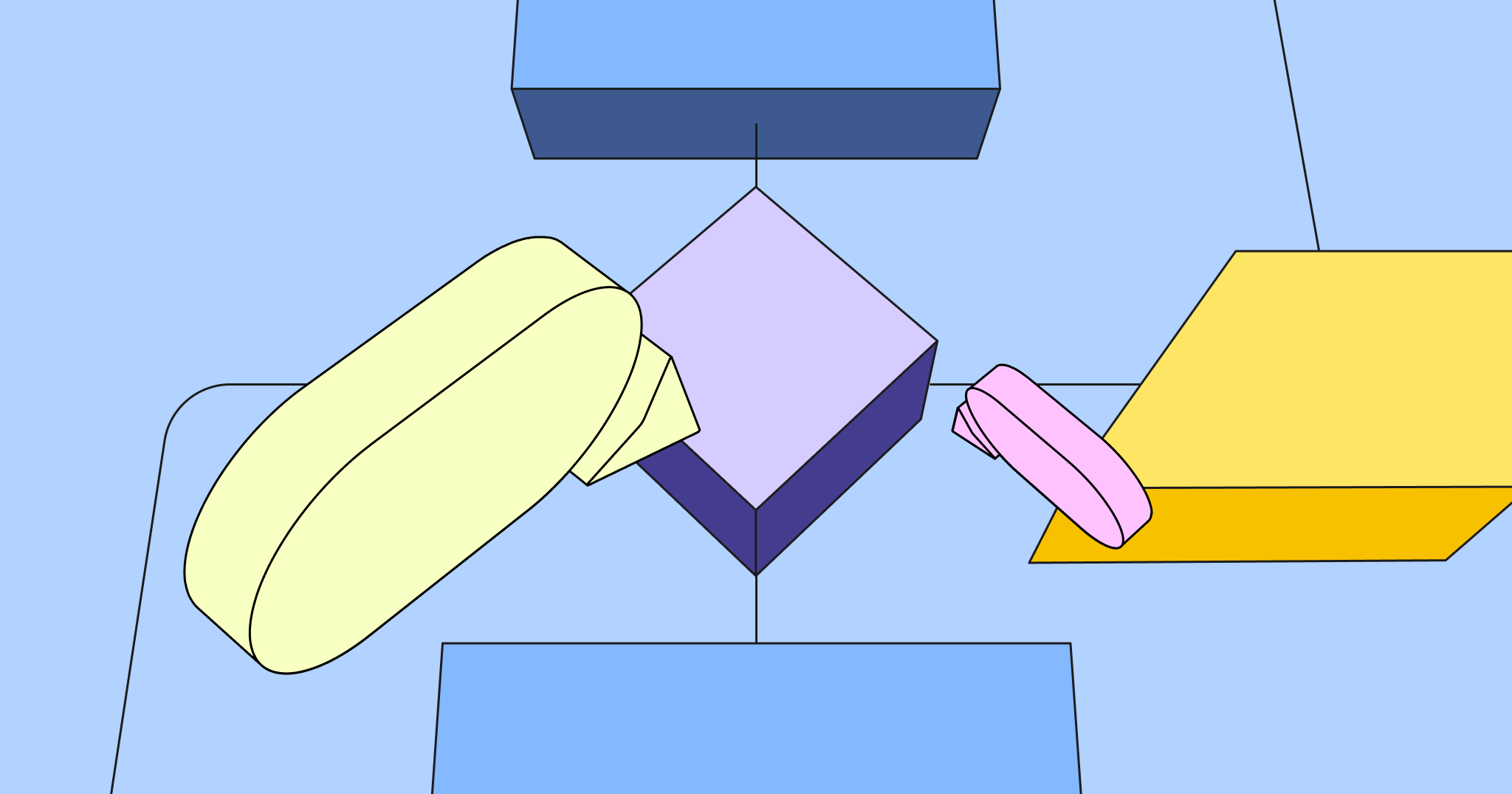Write it down. It’s common and worthwhile advice when you want to comprehend and remember information, with plenty of research backing up the power of note-taking.
But while the process of taking notes is helpful in and of itself, it can still be improved. For example, depending on your handwriting, the location of your notes, or even how organized you are, it may not be so simple to read your scribbles or even find the information you want to revisit.
Enter mind map note-taking — an approach to taking notes that can improve your comprehension, creativity, and confidence.
What is a mind map?
A mind map is a diagram that shows a core concept with branches for related ideas and subtopics. Here’s a simple example:
While mind maps are common aids for brainstorming, problem-solving, and planning, there’s another area where they come in handy: note-taking.
When can you use a mind map for note-taking?
With a traditional (or “linear”) approach to note-taking, you grab a piece of paper or a blank document and jot down information in the order you receive it. For example, you note takeaways as you listen to a presentation.
But when you take or organize your notes with a mind map, you go beyond simply regurgitating the information onto your own page. You organize it and form connections.
You can use a mind map to reflect on your notes from a:
- Webinar or presentation
- Meeting or workshop
- Brainstorming session
…and plenty more. If you’re worried about keeping up with all of the information while diagramming in real-time — especially in fast-paced meetings and conversations — you can stick with a traditional note-taking method and then review and organize your notes into a mind map afterward.
5 reasons mind maps improve your note-taking
Mind map note-taking offers a few advantages over the running pages most of us are accustomed to:
1. Mind maps mirror non-linear thinking
It may sound obvious, but it bears repeating: People think in different ways. Generally, our approaches to thinking can be grouped into two different categories: linear thinking and non-linear thinking. Here’s a quick look at the difference:
-
Linear thinker: Thinks using a sequential, step-by-step approach.
- Example: When writing a report, a linear thinker starts with the introduction, then the body, and then the conclusion.
-
Non-linear thinker: Thinks by jumping around between different aspects and concepts.
- Example: When writing a report, a non-linear thinker might start with the conclusion and final message before collecting more research and writing the rest of the report.
Mind maps are especially helpful for non-linear thinkers, as this format helps them capture ideas in a flexible, visual format that matches their natural thought process.
2. Mind maps are easier to create
While a mind map might initially seem more daunting than a classic page of notes, you’ll likely be surprised by how simple this approach is to use in practice.
Once you get the hang of them, mind maps feel intuitive to create and will provide you with a comprehensive overview of your topic with plenty of labels and connections to summarize information.
3. Mind maps are easier to reference
Because you don’t have endless pages of notes, mind maps are also easier to revisit and review. Thanks to their highly visual format, you can quickly find the information you need.
Additionally, mind maps don’t just summarize information. They help you organize ideas into categories and identify connections between concepts, giving you a more thorough understanding of the topic.
For example, you could use a mind map to brainstorm a new product launch strategy, with branching bubbles for your market research, budget and resources, sales plan, and more. Looking at that mind map gives everybody a high-level overview of your strategy without having to click between different spreadsheets, dashboards, and documents.
4. Mind maps improve comprehension
To put information on a mind map, you need to understand the common themes and how different ideas relate to each other. That’s a far cry from traditional note-taking, where you can jot down information word-for-word without any grasp of the actual material.
Research shows mind maps boost creative thinking. In a separate study, mind mapping also increases reading comprehension. Mind maps don’t just help you document information — they help you understand it.
5. Mind maps are easy to update
Need to add something new to your notes or revise a piece of information? Your updates can quickly get lost on a standard document.
With a mind map, you can easily move information around or add new branches to your core concept. Plus, if you build your mind map with a tool like Miro, your mind map will automatically adjust when you add or move ideas.
Get started with the best mind map template for note-taking
Ready to create your first mind map? In general, you’ll start with your core concept — the problem you’re trying to solve or the topic you’re exploring — in the center and expand outward from there.
The beauty of mind maps is that they’re flexible and non-linear, which means you can create your map in the way that makes the most sense to you.
If you’re overwhelmed by starting with a blank slate, get started with Miro’s mind mapping template. With automated diagramming tools built right in, it’ll help you create your first mind map within minutes.




